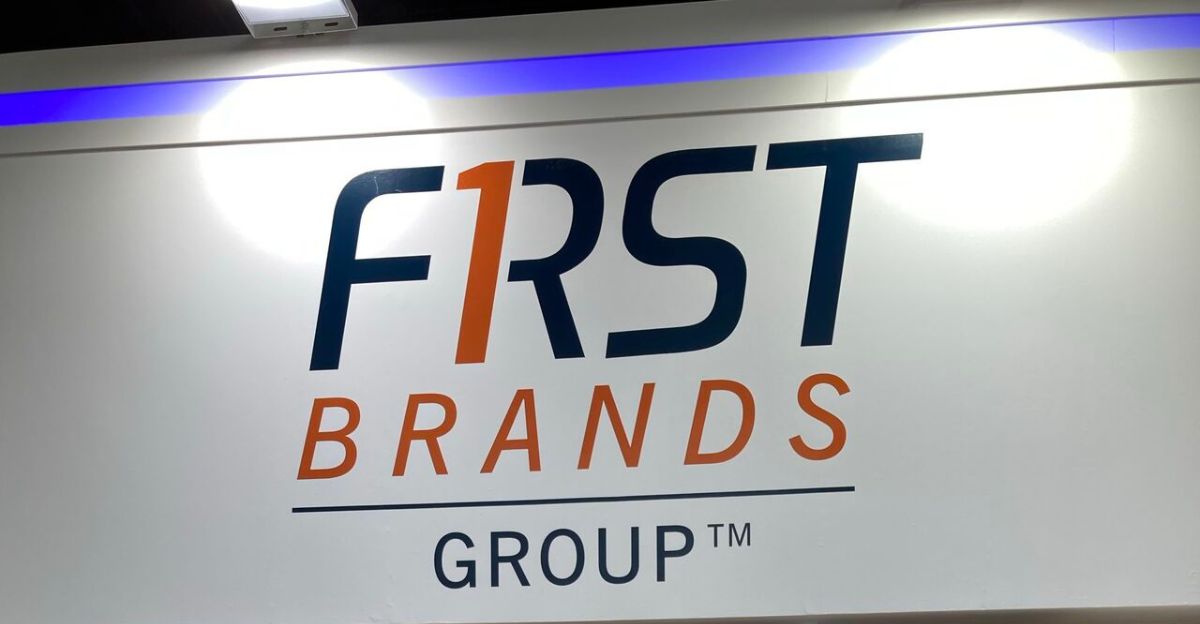
In late September 2025, First Brands Group, a prominent player in the U.S. auto parts industry, filed for bankruptcy, shaking the financial world. This unexpected collapse revealed an alarming $2.3 billion in missing funds, raising serious concerns about the stability of private credit markets. The case has highlighted the risks inherent in opaque financial structures that many have overlooked.
As analysts scramble to comprehend the implications, the event raises critical questions about the viability of companies engaged in complex financing arrangements that may mask underlying vulnerabilities. The fallout from this situation has the potential to ripple through various sectors.
Market Contagion Fears

The immediate aftermath of First Brands’ bankruptcy set off a wave of panic across financial markets. Jefferies Financial Group, a key lender to First Brands, saw its stock drop significantly after disclosing $715 million in exposure to the company’s debt.
Financial analysts have raised alarms about a contagion effect, suggesting that other banks and investment funds may be harboring dangerous, undisclosed risks akin to those at First Brands. As uncertainty looms, creditors and investors are questioning the robustness of their divisions, prompting a reevaluation of credit practices and risks associated with opaque financial dealings.
Industry Giant’s Rise

First Brands Group, initially founded as Crowne Group in Ohio by Malaysian entrepreneur Patrick James, experienced impressive growth through strategic acquisitions. By 2020, the company had restructured and rebranded, assembling a portfolio of 24 automotive businesses that employed over 26,000 individuals and distributed parts nationwide.
The swift expansion was buoyed by a vision of becoming a leading auto parts supplier in America. However, this rapid ascent masked the company’s growing dependency on complex financial arrangements, a precarious strategy that eventually paved the way for its downfall. The lack of transparency would soon become a critical issue.
Mounting Financial Pressure

The aggressive expansion strategy adopted by First Brands rested heavily on a foundation of debt-fueled acquisitions and intricate financing methods. As financial environments tightened and regulatory scrutiny intensified, these off-balance sheet arrangements revealed themselves to be significant vulnerabilities.
Analysts have noted that the company’s reliance on such opaque structures exacerbated its troubles, facilitating a disaster waiting to unfold. With insufficient oversight and escalating debt, First Brands teetered on the edge, making its subsequent collapse a cautionary tale of unchecked ambition and risk management gone awry.
The $2.3 Billion Disappearance

At the heart of this saga lies a staggering revelation: First Brands’ bankruptcy filings revealed $2.3 billion in missing funds, allegedly lost through questionable invoice factoring and supply chain financing strategies.
Federal prosecutors have initiated investigations into potential fraud, as creditor accounts reflect alarming discrepancies, many showing $0 balances for billions owed. This discovery has not only shocked stakeholders but also underscored the urgent need for accountability and reform within the industry. The magnitude of the missing funds has raised alarm bells, prompting scrutiny of financial controls across similar enterprises.
Regional Fallout

The collapse of First Brands has resonated most loudly in states such as Michigan, Ohio, and Texas, where its manufacturing plants and distribution centers played a vital role in local economies. Thousands of jobs are at risk, and many suppliers are struggling with unpaid invoices.
Community leaders express deep concern about the longer-term implications of this financial fallout on families and small businesses that depend on First Brands’ operations for their livelihoods. As these regions grapple with the loss, the heartbreaking reality of potential job losses weighs heavily, highlighting the human cost of corporate failures.
Human Toll

Amid the chaos, the human element remains crucial. Workers, such as Maria Lopez, a veteran employed at the Michigan plant, expressed feelings of devastation and anxiety over their precarious futures. “It’s hard to think about what’s next when our livelihoods are at risk,” she lamented.
Community leaders have raised concerns about the broader impact on the local community fabric, noting a potential increase in economic distress. The anxieties experienced by employees and their families underscore the gravity of the collapse, reminding us that behind financial statistics lie real lives and stories of uncertainty.
Competitors and Regulators React

In response to the crisis, rival auto parts firms have jumped into action, scrambling to fill the supply gaps left by First Brands. Meanwhile, regulators, particularly at the Securities and Exchange Commission (SEC), are now scrutinizing private credit practices and the broader implications of shadow banking.
Calls for tighter oversight are louder than ever as the collapse has revealed the potential systemic risks associated with unreliable financing models. This moment presents a pivotal opportunity for regulatory reform as stakeholders demand transparency and accountability to prevent future catastrophes of this magnitude.
Macro Market Warning

The First Brands debacle has drawn ominous comparisons to previous financial crises, including the infamous 2008 subprime mortgage collapse and the Greensill Capital fallout. Industry experts sound the alarm over the unchecked growth of private credit, warning that hidden liabilities may pose a significant threat to the stability of broader markets.
“We cannot afford to ignore this risk,” remarked one analyst, emphasizing the urgency for deeper investigations into financial practices across the industry. The lessons from First Brands may well dictate the future direction of credit market regulations.
Jefferies’ Exposure

In a startling revelation, Jefferies Financial Group disclosed its $715 million exposure to First Brands, marking a potential second shockwave from the bankruptcy. With the bank’s entanglement encompassing multiple roles, including advising, lending, and distributing loans, questions about the interconnectedness of risk in the financial sector have come to the forefront.
This situation has created widespread concern about the adequacy of risk management practices across financial institutions, as their own vulnerabilities become increasingly apparent in light of First Brands’ collapse. This intricate web has prompted financial analysts to reevaluate their strategies.
Internal Frustration

Internally, First Brands faced a tidal wave of frustration as corporate leaders scrambled to address the crisis. Former CFO Charles Moore stepped in as interim CEO, tasked with managing the fallout. Many creditors and employees voiced concerns over the company’s failure to implement adequate financial controls, raising questions about whether critical warning signals were overlooked.
The atmosphere within the company was charged with anxiety, highlighting the urgent need for transparency and accountability. It became evident that the failure to act decisively had far-reaching consequences as trust eroded among stakeholders.
Leadership Shakeup

The departure of founder Patrick James left a significant leadership void at First Brands, further exacerbating uncertainty. Charles Moore’s appointment as interim CEO was seen as an attempt to stabilize operations during this tumultuous period.
With pressure mounting from creditors and investigators probing the missing funds, Moore emphasized the need for cooperation and transparency moving forward. “Restoring trust is our top priority,” he stated, signaling a new direction for the company. This leadership transition comes at a precarious moment, underscoring the importance of decisive and transparent governance during turbulent times.
Attempted Comeback

As First Brands works to establish a restructuring plan, management aims to preserve core operations and jobs while liquidating non-essential assets. The road to recovery will hinge on restoring creditor trust and addressing the ongoing fraud investigation. Experts suggest rebuilding confidence among stakeholders is crucial if the company is to stage a successful comeback.
“This is not just about financial recovery; it’s about restoring faith in the brand,” one analyst noted. As First Brands navigates this arduous journey, the stakes are high, and the path remains fraught with challenges.
Expert Skepticism

Despite efforts geared toward recovery, skepticism abounds among industry analysts regarding First Brands’ prospects. “The scale of hidden debt is unprecedented,” cautioned a Wall Street strategist, hinting at the deep-seated issues that may hinder revitalization efforts.
Many observers doubt whether the company can regain its market standing or restore investor confidence. The prevailing atmosphere of uncertainty emphasizes the challenges First Brands faces in overcoming a legacy of mismanagement and financial opacity. This skepticism serves as a stark reminder of the uphill battle ahead.
What’s Next for Private Credit?

The First Brands bankruptcy has catalyzed an urgent conversation about the future of the private credit market. Industry experts argue that reform is necessary to address the opaque structures that contribute to systemic risks. As regulators prepare to tighten oversight, financial institutions must evaluate their own practices to mitigate exposure to hidden liabilities.
At this juncture, the industry presents an opportunity to reflect on its standards and practices, emphasizing the importance of transparency in fostering a sustainable financial environment. The lessons learned here could reshape the landscape for years to come.
The Role of Transparency

Transparency in financial reporting and credit practices is fundamental to restoring confidence in the market. The First Brands scandal illustrates how a lack of visibility can lead to catastrophic failures. More straightforward guidelines and disclosures could empower stakeholders to make informed decisions and reduce systemic risks.
Implementing robust oversight and ensuring accountability could act as critical pillars toward rebuilding trust in private credit. As the industry responds to recent events, enhancing transparency will be crucial in preventing future debacles.
Stakeholder Accountability

With the unfolding drama around First Brands, an emphasis on stakeholder accountability is essential. The roles of lenders, investors, and management need a thorough examination to enhance corporate governance.
Financial institutions must prioritize responsible lending and robust due diligence practices. Transparently engaging with stakeholders will pave the way for a healthier financial ecosystem. As the dust settles, industry experts suggest that proactive measures towards accountability will help foster resilience and trust across the sector.
Lessons Learned

The fallout from First Brands provides multiple lessons regarding fiscal responsibility, governance, and risk management. Understanding the importance of robust internal controls and transparent financial practices can help prevent similar disasters from occurring. Stakeholders across the finance and manufacturing sectors are urged to adopt a more cautious and informed approach when assessing risk.
As analysts and commentators continue to dissect the impact of the bankruptcy, the essential lessons will serve as a guide to navigating the complex, interconnected nature of modern business more effectively.
Future Outlook

Looking ahead, the future of First Brands hinges on its ability to recover from this crisis and regain market trust. Analysts predict a long road, where transparency and credibility will dictate the firm’s path to recovery. Organizations in the auto parts sector may face increased scrutiny, forcing them to adapt their practices to avoid similar pitfalls.
The evolving landscape will likely foster a renewed focus on governance and ethical practices. The ramifications of this bankruptcy will extend far beyond the auto parts industry, affecting broader market behaviors.
Navigating Uncertainty

In conclusion, the collapse of First Brands serves as a stark reminder of the vulnerabilities inherent in opaque financial structures and aggressive growth strategies. The $2.3 billion Disappearance has thrown numerous stakeholders into turmoil, raising fundamental questions about stability in private credit as well as the human aspect tied to corporate failures.
As the industry grapples with the implications, the path forward will necessitate an unwavering commitment to transparency, responsible governance, and accountability to foster a healthier financial ecosystem. The lessons learned from this crisis must resonate throughout the sector, guiding future practices and strategies.